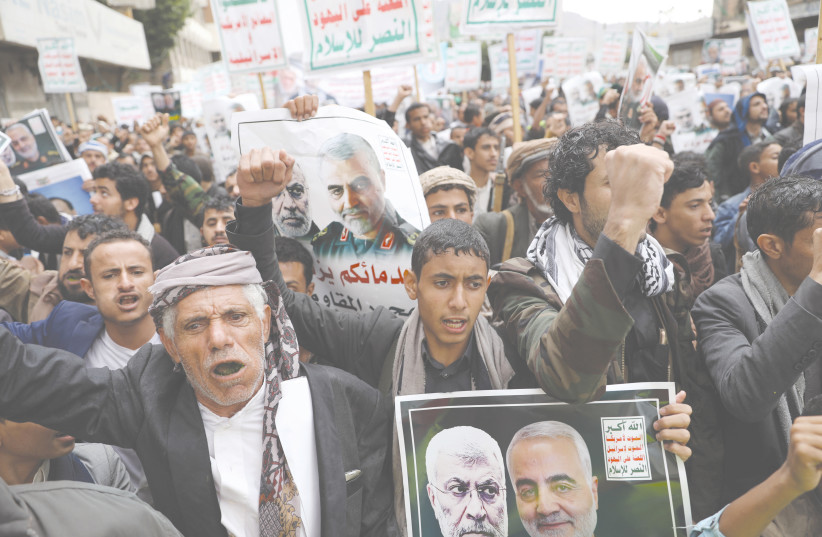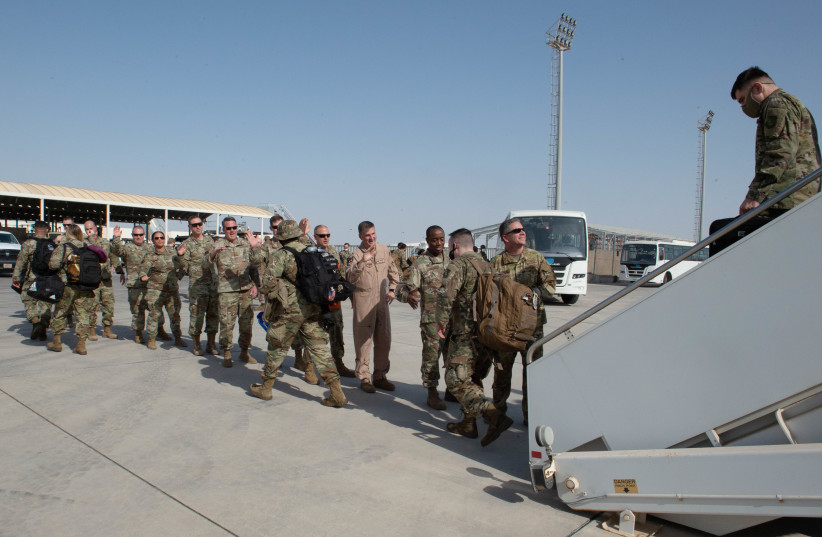In late March of this year, two squadrons of the US A-10 Thunderbolt arrived in the UAE amid Iran tensions in the region. The US carried out airstrikes in Syria on March 23 against pro-Iran militias after attacks on US forces in eastern Syria.
Groups affiliated with Iran’s IRGC were targeted, and soon after, the A-10s arrived at Al Dhafra base in the UAE. The Iranian-backed groups use drones and rockets to target US forces and they have carried out almost 80 attacks since January 2021.
The US A-10 aircraft is now back in the spotlight because America is outfitting the A-10 with up to 16 GBU-39/Bs, small diameter bombs (SBU) that weigh 250lb each. At the same time, the US may soon retire more of the A-10s. Thus the deployment of the A-10 has historic relevance and could help deter Iran as Iran continues to threaten US forces and harass ships in the Persian Gulf.
A report at The Drive on April 25 noted “US Air Force A-10 Warthogs can now employ up to 16 GBU-39/B Small Diameter Bombs (SDBs) on a single sortie, among other stores, with the help of a new software update. Four of the five pylons under the fuselage were recently loaded with specialized bomb racks each holding four SDBs during a test sortie to validate the software for frontline distribution.”
Now the Wall Street Journal has said that “the military is for the first time putting 250-pound ‘bunker busting’ bombs on attack aircraft recently sent to the Middle East, American officials said, in the latest move to deter Iran.”
The report says that “the decision to put more powerful weapons on a squadron of A-10 Warthogs was designed to give pilots a greater chance of success in destroying ammunition bunkers and other entrenched targets in Iraq and Syria, where U.S. forces have been repeatedly targeted by Iran-backed fighters, the officials said.” The additional munitions give the plane a lot more firepower, the report notes.

The reports of the new munitions for the plane are raising eyebrows among those who observe the region, clearly having the potential to give these aging aircraft a lot more punch and provide them with a potential new or greater role.
US Air Force Central Command noted that “since its creation in 1975, the A-10 has provided air support to ground troops, destroying adversary forces and infrastructure as the first aircraft designed specifically for close air support. The deployment of the A-10 offers the opportunity for US Air Forces Central Command (AFCENT) to experiment with close air support capabilities in order to achieve the most robust, diverse force possible.”
A-10 originally mean to stop Soviet tanks
The A-10 was designed during the Cold War as a close air support aircraft designed to help eviscerate masses of tanks and vehicles on the battlefield. The aircraft was built around a giant seven-barrel Gatling-style 30mm gun that was designed to fire a mix of ammunition, including armor-piercing incendiary rounds, and high explosive incendiary rounds that also included depleted uranium rounds.
The aircraft’s role never came to fruition in the Cold War because the US never had to face thousands of Soviet tanks rolling across the Moselle River or some other frontline. Instead, the plane called the Warthog, got a new lease on life for operations in Iraq and then in the global war on terror.
As a big gun platform, it was well suited for battlefields without any air defenses, because the plane wasn’t suited for a modern conflict with advanced long-range air defenses. The US is still contemplating retiring the 280 A-10s that are still in its inventory, according to reports at Defense News.
While they await retirement they await their fate, the planes are getting another role. Two squadrons have been sent to Dhafra, these include the 75th Expeditionary Fighter Squadron and 75 Expeditionary Fighter Generation Squadron, which will come under the 380th Air Expeditionary Wing.

In late April the 75th Expeditionary Fighter Squadron completed a combat sortie out of Al Dhafra Air Base, the US said. “The deployment of A-10s in the region provides additional capability in the Middle East alongside fighter aircraft and offers an opportunity to experiment and innovate with close air support specialists. Ninth Air Force (U.S. Air Forces Central) is committed to ensuring security and stability alongside our partners in the U.S. Central Command area of responsibility,” the US Air Force said.
"The deployment of A-10s in the region provides additional capability in the Middle East alongside fighter aircraft and offers an opportunity to experiment and innovate with close air support specialists"
US Air Force
According to an article at The Drive on April 25 “photos released by the Department of Defense show the Warthog recently kitted out with different SDB configurations, including one with 16 SDBs and one with eight SDBs and a centerline fuel tank, at Nellis Air Force Base in Nevada.
According to the image captions, the recent tests took place between April 19-20, and saw personnel attached to the 422nd Test and Evaluation Squadron (TES) assess an updated version of Operation Flight Program (OFP) 11 – software that controls aircraft avionics and enables the integration of weapons.”
The SBD-39B small diameter bomb is a 250lb guided munition. The US said the “SDB relies on the Global Positioning System to provide navigation to the target. Additionally, its small size allows increased aircraft loadout to achieve multiple kills per sortie and inherently reduces the probability of collateral damage.”
The bomb can fly around 40 nautical miles and the US Air Force had noted that the F-15E was the aircraft that was currently outfitted with it. Adding these to the A-10 gives it the ability to conduct more stand-off attacks, rather than the close air support role it was designed for.
This isn’t the first time the A-10 has gotten new bomb loads, in June 2019 The Drive said that it had dropped a GBU-31, a 2,000lb bomb, on ISIS positions. According to that article, the A-10 had already been using GBU-28s, GBU-12s and GBU-58s, as well as AGM-65 Maverick Air to Ground Missiles and rockets. Giving the warplane the option to carry more SBD racks gives it more firepower.
A-10 could be a "bomb truck"
Task and Purpose also highlighted this new role for the A-10 as a kind of “bomb truck” carrying a lot of weapons on up to 10 weapon stations. What that means is that while other aircraft may prioritize stealth and preparation for fighting near-peer adversaries such as China or Russia, the A-10 could churn up ISIS targets or even Iranian-backed militias, if it was called upon to do so.
A small number of A-10s based in Dhafra may help deter Iran, however, the fact that Iran raided a ship bound for Houston this past week and took the ship to Bandar Abbas, shows that Iran is still willing to act as it has in the past.
The US isn’t ready to send aircraft to take out Iranian fast boats or deal with the ongoing militia threat, which means that while these aircraft are important and their deployment illustrates the continuing US commitment to the region, it’s not clear if they will get a chance to serve in their potential new role as “bomb truck.”
